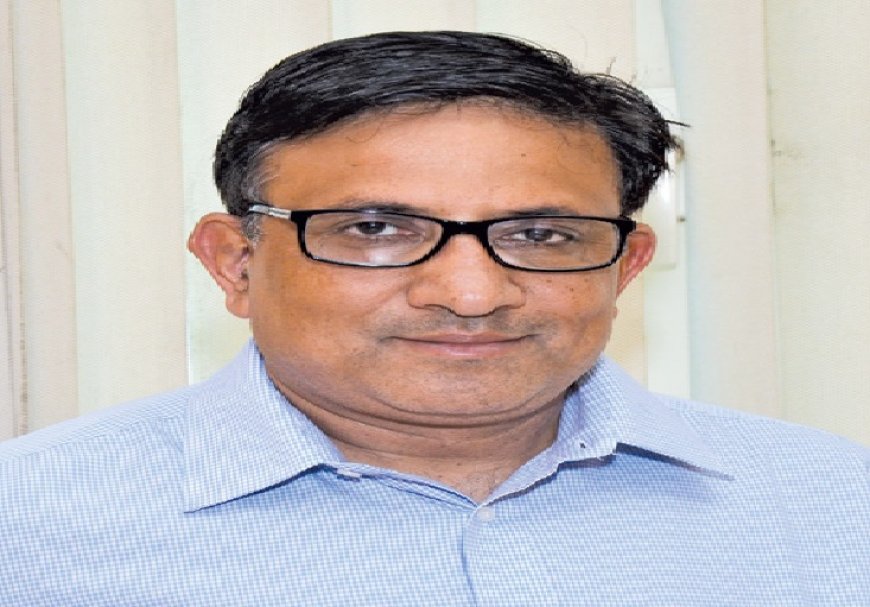We are witnessing a surge in demand for crushers in the iron ore segment.

Sharad Thussu
Head - Mining & Construction Equipment Division, Voltas
Construction activities are gaining pace in the country once again. How is this driving the demand for aggregates?
The government's focus on Gati Shakti and developing India's core infrastructure will be driving demand for all allied industries in construction. As India continues to tread on the infrastructure development path, the demand for aggregates is expected to increase exponentially over the next few years as they serve as reinforcement to add strength to the overall composite material. The availability of good quality aggregate is still a concern mainly due to the strict environmental laws that restrict mining. While the demand for newer machines is not that bullish, the existing range of machines will take care of the current developmental activities in mining and infrastructure.
There is a growing requirement for crushers and screens to produce more aggregates to meet the demand. How do you assess this scenario?
The average usage of aggregates varies from project to project since the specification of each project is different. India is one of the world's top aggregate users and is regarded as the global construction industry's epicentre. The need for crushers and screens is steadily increasing as a result of the upcoming construction and infrastructure development projects such as roads, dams, and railways. The Covid-19 pandemic had paused industry developments, but the overall economy is showing positive signs of recovery, with a steady increase in demand. Additionally, we are witnessing a surge in demand for crushers in the iron ore segment, primarily due to the increased local steel demand and the auctions of iron ore. Going forward, we are optimistic about staying on the path of upward growth trajectory as India has large reserves of iron ore and our expertise is highly sought-after in the industry.
What is the demand-supply scenario of crushers and screens in mining and mineral processing?
Crushers and screen manufacturers are expecting higher sales realisation. The crushing and screening equipment segment is estimated to register the highest CAGR of 5.7% by 2030. In addition, the segment dominated the market in terms of revenue, contributing to more than two-thirds of the global crushing, screening, and the mining equipment market size is anticipated to record a valuation of US$ 90 billion by 2027, according to the most recent study by Global Market Insights Inc. While the demand for newer machines are not that bullish, the existing range of machines are fully optimised to undertake current developmental activities in mining and infrastructure. With investments happening across the country in infrastructure, rebuilding and iron ore mines auction, there will be an increased demand for crushers and screen in times to come.
Which capacity crushers and screens are fast-moving in Indian construction and mining space?
Restrictions on quarrying in certain regions have made other quarry operators look for higher capacity crushers to enhance production to meet the increasing demand for aggregates. Earlier, the demand for stationary and skid-mounted crushers was higher than that of track-mounted mobile plants due to low operating and running costs. However, the present market scenario is different. Track-mounted crushing and screening plants are increasingly finding precedence with road contractors, who dominate the market, owing to a range of advantages, such as instant off-the-shelf deployment, mobility and superior quality of aggregates produced.
How is manufactured sand (M-sand) segment driving the demand for crushers and screens? What are the key solutions in M-sand production?
The production of aggregates, M-Sand is also in an upward trend with investments in Roadways, Railways, Metros and Smart Cities and mega infrastructure projects like Bharatmala and SetuBharatam. The rebuilding of roadways, railways, waterways, smart cities, metros, and coal and iron ore mining are great opportunities across the country as they contribute to the growth in demand for equipment used in mining, construction, and crushing & screening.
The M-sand derived from crushed rock fines is a sustainable and viable alternative for construction needs and can also be manufactured in the vicinity of quarry sites, thus reducing transport costs and ensuring timely project completions. Production of high quality manufactured sand (M-sand) by the plant owners is leading to greater demand and optimisation of plants in the aggregates business. The scenario is governed by a demand and supply cycle. The restrictions on using the river sand are making the customers turn to M-sand. The road construction sector, core construction and real estate sectors play a major role in driving the market. More than 50 per cent of the demand comes from these sectors. The emphasis on creating sustainable projects is on the rise and so, we are confident that the demand for quality M-sand meeting specific requirements will also rise. M-sand is produced with the desired particle shape, gradation and silt content with the absence of deleterious materials, by crushing and washing.
Recycling and reusing of C&D waste is emerging in construction. What are the crushing & screening solutions offered specific to C&D waste recycling?
India recycles just one per cent of its construction and demolition (C&D) waste, according to the latest report released by the Delhi-based non-profit, Centre for Science and Environment (CSE). The country generates an estimated 150 million tonnes of C&D waste every year, according to the Building Material Promotion Council. But the official recycling capacity is a meagre 6,500 tonnes per day — just about one per cent. Hence, a wide range of crushing solutions is needed to process large C&D materials into smaller, recyclable products. C&D crushing systems typically start with primary jaws, cones and/or large impactors. The process can then includes a variety of secondary crushing equipment to reach the final desired product. Screening and sizing equipment provides precise particle separation for both dry and wet processing. From pre-screening material to rinsing and sizing the final product, to dewatering lightweight trash removed from the feed; these are various solutions that can be used during all stages of the C&D recycling process.







